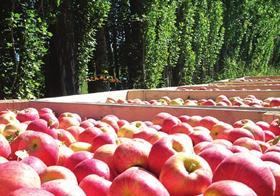
High tariff rates in a number of key markets continue to prevent New Zealand’s horticultural industry from reaching its full export potential, according to trade envoy Mike Petersen.
Speaking with Fairfax Media, Petersen said tariffs on fresh produce currently cost the industry NZ$190m per year.
“That $190m represents $38,000 per grower in the country - more than a family's living costs. That's the size of the prize if we reduce tariffs,” Petersen explained.
In pleasing news for the sector, tariff expenditure has decreased from NZ$241m in 2012. Free trade agreements in place with a number of trading partners in northern Asia will generate further reductions over coming years.
The value of New Zealand’s horticultural exports – which encompass wine, fruit and vegetables – currently stand at around NZ$5bn per annum and could yet reach the industry’s target of NZ$10bn by 2020.
“It's only a matter of time before horticulture exceeds other sectors, and that's because you can generate so much from a small amount of land,' Petersen told Fairfax Media.
Aiding the push, the New Zealand Horticulture Export Authority (HEA) Amendment Bill was passed earlier this week.
Horticulture New Zealand chief executive Mike Chapman said the amendments would provide clarity around export market entry and exit, as well as the flexibility of multi-tier export licensing.
“When we submitted on the Bill we asked for that clarity to encourage exports and tiered licensing to allow for market development and exploration,” Chapman said. “This is an enabling piece of legislation that modernises the Act of 1987, Horticulture New Zealand welcomes its passing.”
There are nine product groups using the HEA structure, namely: avocado, blackcurrant, buttercup squash, chestnut, kiwifruit to Australia, persimmon, summer fruit, tamarillo and truffle.
“The HEA mechanism helps these exporters collectively navigate a trading environment that carries both risks and rewards and is particularly useful where an industry wants to establish a market presence in a new export destination,” Chapman explained.



